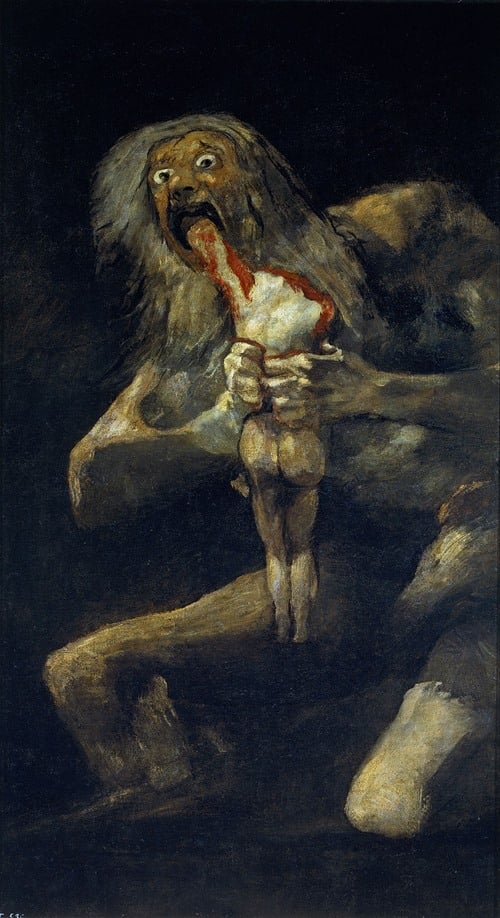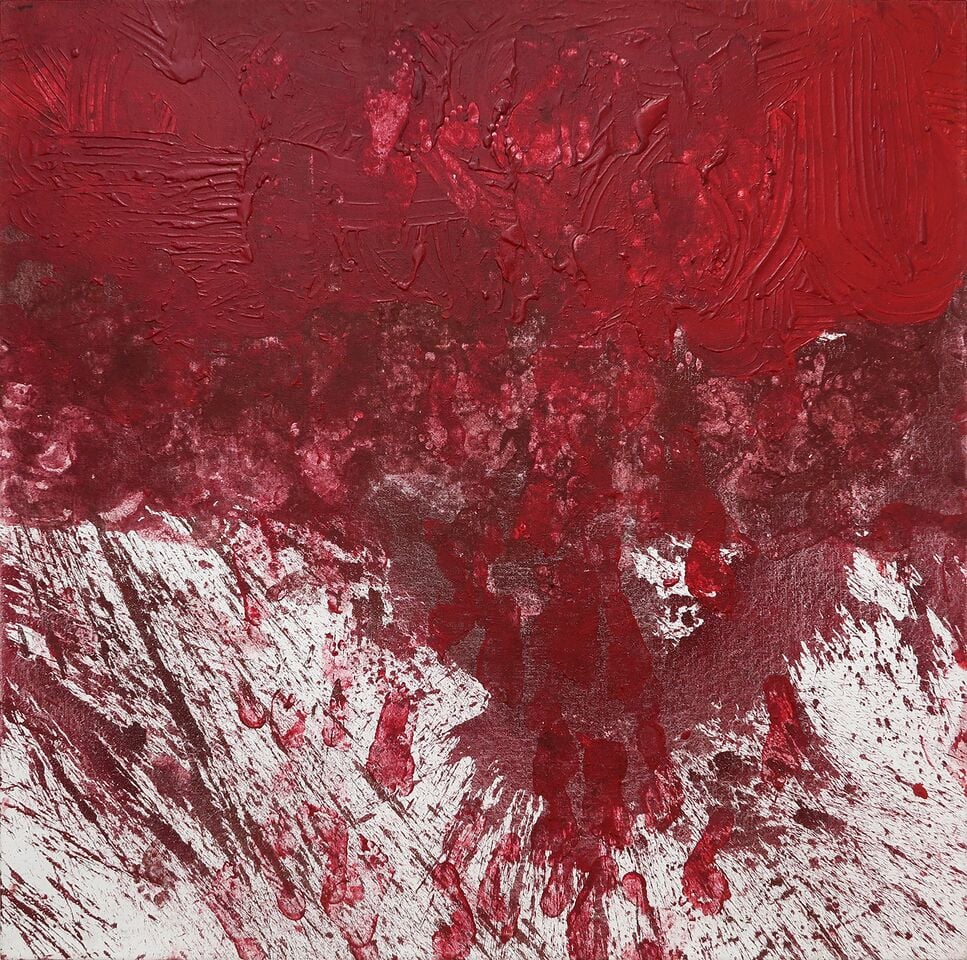Art World
Boo! The Spookiest Works in Art History, From Samurai Decapitations to Ghoulish Incubi
Spine-tingling works by Goya, Van Gogh, and more.
Spine-tingling works by Goya, Van Gogh, and more.
Hannah Pikaart

To celebrate Halloween, we found the spookiest, bloodiest, gruesomest works in art history. Some of it will make the hair on the back of your neck stand up, while others will just have you scrolling feverishly past, praying the images don’t come back to haunt you in your dreams.

Francisco de Goya, Saturn Devouring His Son, (1819-1823). Wikimedia Commons.
I can confirm that this painting has, in fact, given me nightmares. In Roman mythology, Saturn ate his children in fear that they would one day overthrow him. Goya is not the only artist to depict this figure, but his rendering is by far the creepiest.

Hermann Nitsch,Schuttbild (2013).
Courtesy of Marc Straus Gallery.
Would you be surprised to find out that the red in this painting is actual blood? Well, it is. Nitsch’s performance art group, Orgy Mystery Theater, specifically works with blood, flesh, and entrails from animals. During day-long events Nitsch and his followers will cover people in blood and then paint these canvases.

Tsukioka Yoshitoshi,Sakuma Daigaku (1868). Wikimedia Commons.
Speaking of blood, this woodblock print of Sakuma Daigaku, a Japanese samurai, drinking the gore of his decapitated enemy is not the most realistic—it’s unlikely that samurai would practice such brutality—but it’s certainly hair-raising.

Théodore Géricault, Anatomical Pieces (1819). Wikimedia Commons.
More famously known for The Raft of the Medusa, Géricault finished a series of macabre still life paintings of body parts as preparation for his magnum opus. In fact, Géricault took frequent trips to the morgue to sketch body parts. Sometimes he would even take home limbs to depict them throughout their states of decomposition.

Francisco de Goya,The Witches’ Flight (1798). Wikimedia Commons.
Goya often painted or etched gruesome creatures. Witches, as painted here, were a hot topic during Goya’s lifetime due to barbarity of the Spanish Inquisition that sought to punish heretics.

Katsushika Hokusai,The Lantern Ghost, Oiwa-San (1826-1837). Wikimedia Commons.
This woodblock print depicts one of the most famous ghost stories in Japan. According to the legend, Oiwa was a beautiful woman who married her sweetheart, Iemon, but he was never satisfied. He was unhappy with his poverty and, after meeting a beautiful rich woman, he became upset with his marital status too. In an effort to change his life, Oiwa poisoned his wife. While the poison killed Oiwa’s unborn child, she herself did not die, so Iemon pushed her off the edge of a cliff. Then Oiwa came back as a ghost and haunted Iemon until his death. Moral of the story: think twice before you murder a woman scorned.

John Henry Fuseli, The Nightmare (1781). Wikimedia Commons.
According to mythology, incubi lie on sleeping women in order to engage in sexual activity while they’re least expecting it. Yeah, no thanks!

Vincent van Gogh, Head of a Skeleton with Burning a Cigarette, (1886). Wikimedia Commons.
Van Gogh painted this while studying at the art academy in Antwerp. Drawing skeletons was a part of the way artists gained command of anatomy, but painting them wasn’t. So it’s speculated that Van Gogh made this in his spare time. Yes, he actually spent extra time with a skeleton.

Utagawa Kuniyoshi,Takiyasha The Witch and the Skeleton Spectre (1844). Wikimedia Commons.
Princess Takiyasha might have not had any skeletons in her closet, but she could definitely summon them. In this woodblock print, Takiyasha conjures a skeleton specter to frighten Oya no Taro Mitsukuni and his companion. The skeleton must not have scared them too much because later on Mitsukuni defeated Takiyasha in battle. Still, I wouldn’t want to mess with her.

Tsukioka Yoshitoshi, Minamoto Yorimitsu Cuts at the Earth Spider (1892). Wikimedia Commons.
The only thing worse than a spider is a spider that is trying to kill you. According to legend, commander Minamoto Yorimitsu battled many spiders, which would often disguise themselves as people to try to get close and kill him.

Gerard David,The Judgment of Cambyses (1498-1499). Wikimedia Commons.
This hair-raising picture, currently in the collection of Bruges’s Groeninge Museum, depicts the judge Sisamnes being skinned alive for corruption, at the behest of Cambyses II, King of Persia (the enthroned figure on the left). Lest you doubt the power of art: This diptych was used as a form of public propaganda to encourage honesty in towns.

Tsukioka Yoshitoshi,The Heavy Basket (1892). Wikimedia Commons.
I would be freaking out too if I opened a basket and out popped five demons! The surreal image is based on a Japanese tale in which a sparrow tricks an old woman into taking a basket full of demons home with her as revenge for having his tongue cut out. Note to self: never harm a sparrow.